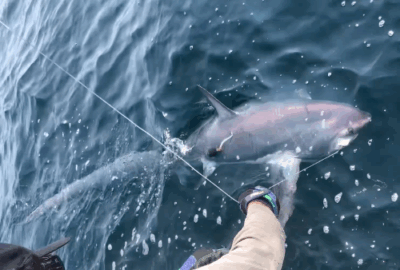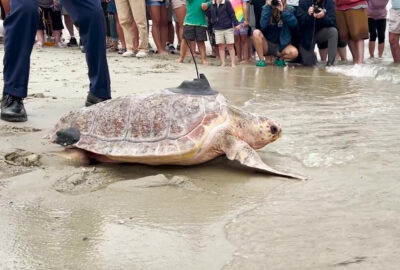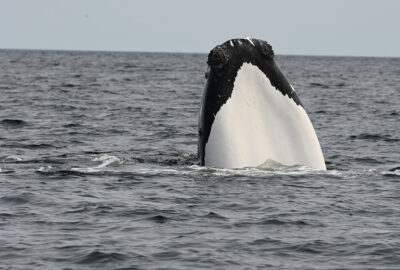Marine Monument Brings Together Diverse Animal Assemblage
New England Aquarium's aerial survey team spots an abundance of marine life within the protected monument
By New England Aquarium on Monday, May 08, 2023


Members of the New England Aquarium aerial survey team recently completed a flight to the Northeast Canyons and Seamounts Marine National Monument. This protected area, 150 miles offshore from Cape Cod, is a biodiversity hotspot. Known for its deep-sea canyons and seamounts, the Monument is host to dozens of species of coral that create a foundation for a vibrant ecosystem far below the surface, where ocean life takes refuge. But our trip revealed an area teeming with life at the surface as well.
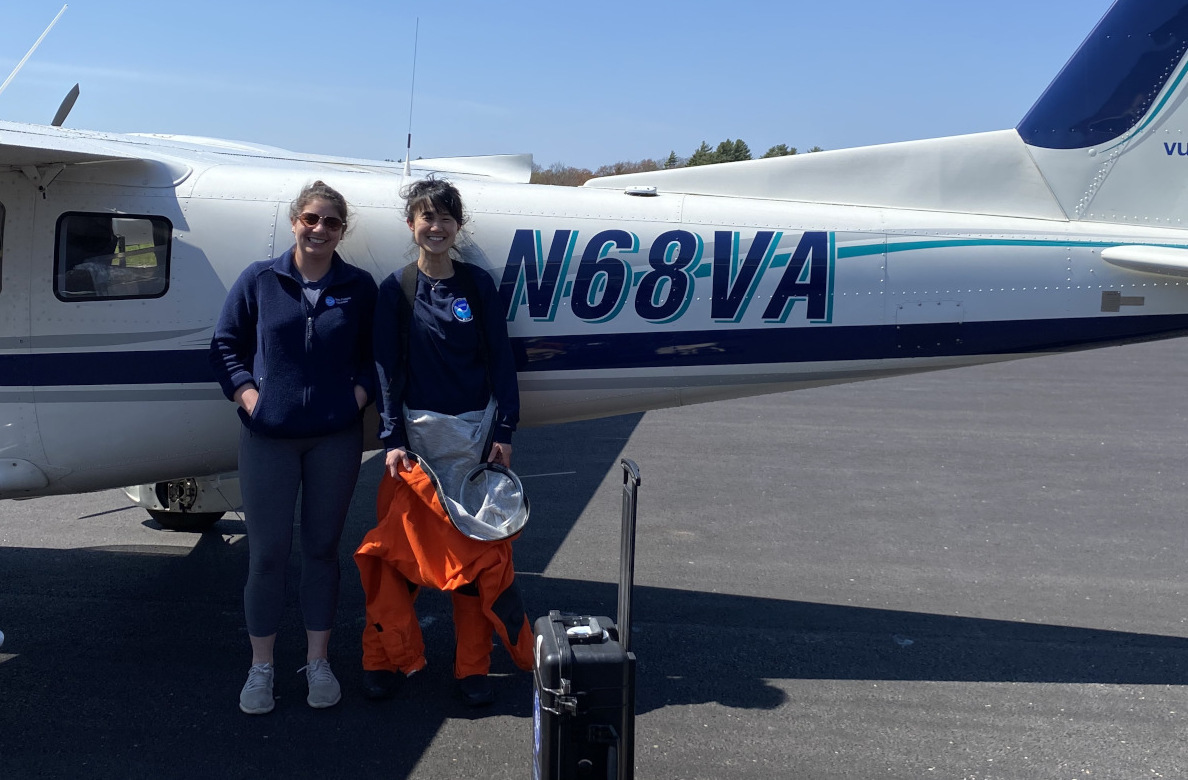
Returning for the first time since last summer, we counted two sperm whales, two True’s beaked whales, two fin whales, and a humpback whale, as well as hundreds of dolphins, dozens of ocean sunfish, and several basking sharks. This diversity of ocean life at the surface of the water, in an area known for its deep-sea corals, was exciting to share with our pilots—two Monument “newbies.”
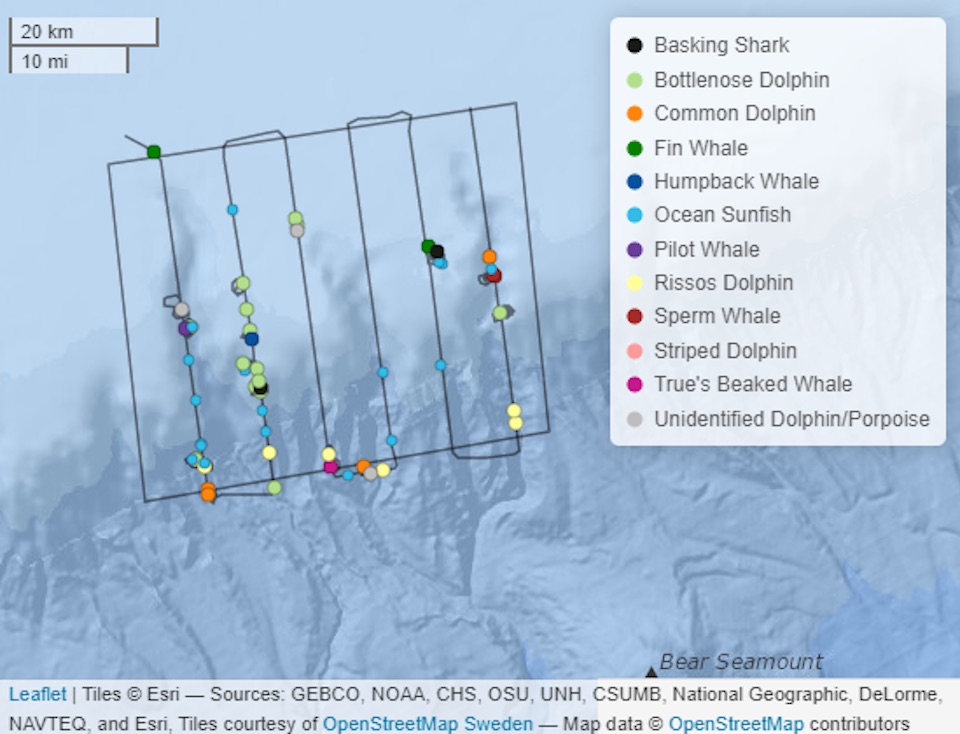
On the long flight out (it takes over an hour for us to fly there at our top speed), we explained to our pilots that the Monument was a protected area, like other National Monuments they might be more familiar with on land—and the only one of its kind in the Atlantic Ocean. We want you to be able to come along with us too, so we’re sharing our top images and highlights from the trip below!
A deep-sea café teeming with ocean life feeding above and below the surface
The Monument serves as a café of sorts because it simultaneously provides food for many different types of animals. The survey area, which contains three underwater canyons, hosts large numbers and varieties of squid that sperm whales, beaked whales, and other squid-eating mammals feed on.
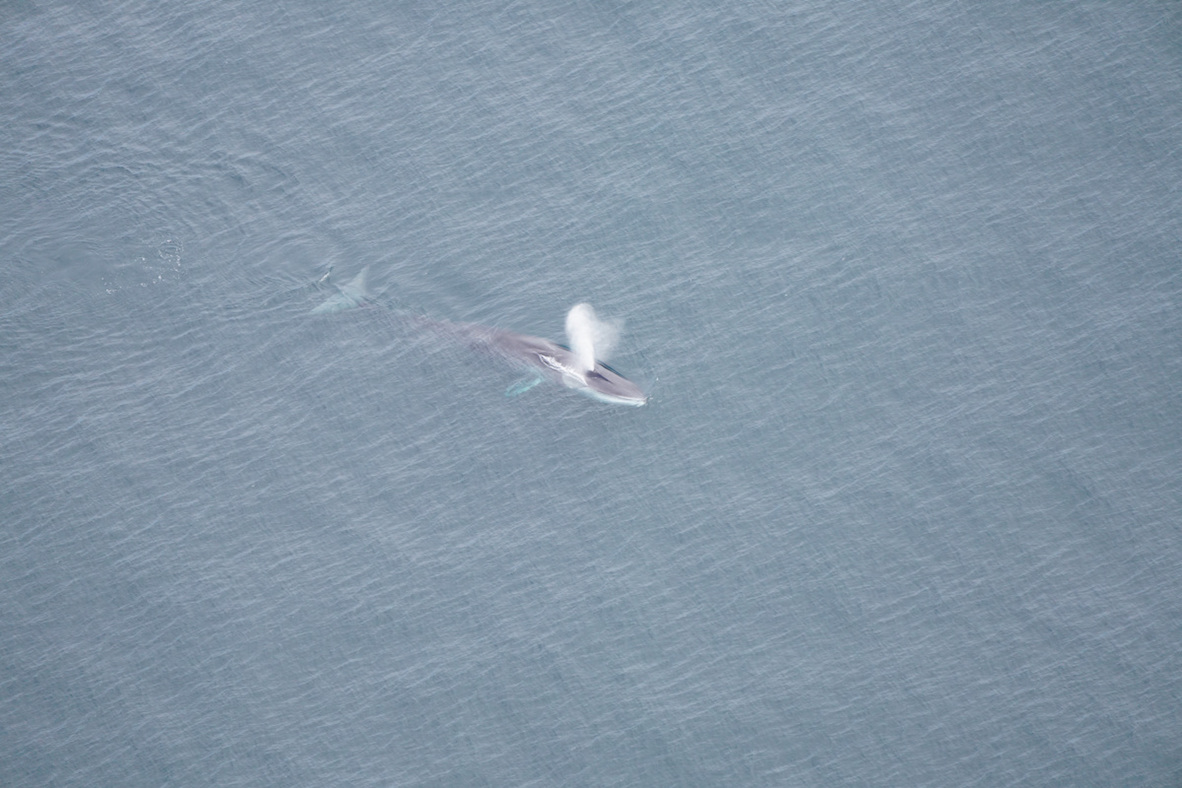
The waters were dotted with small groups of dolphins, and we regularly diverted from our track lines to fly over these groups and photograph them. Some of these species, like the Risso’s dolphins and pilot whales, eat squid similar to the larger beaked and sperm whales. But other species we saw, like bottlenose, striped, and common dolphins, extend their diet beyond squid to include small fish or other food items. And less than five miles away from the squid-specialist sperm whales, we saw a fin whale, which eats primarily small fish. In between all the dolphin sightings, we saw ocean sunfish–which eat jellyfish–and basking sharks, which filter feed on plankton. The Monument is special in this way: it brings together large numbers of species to feed, both above and below the surface.
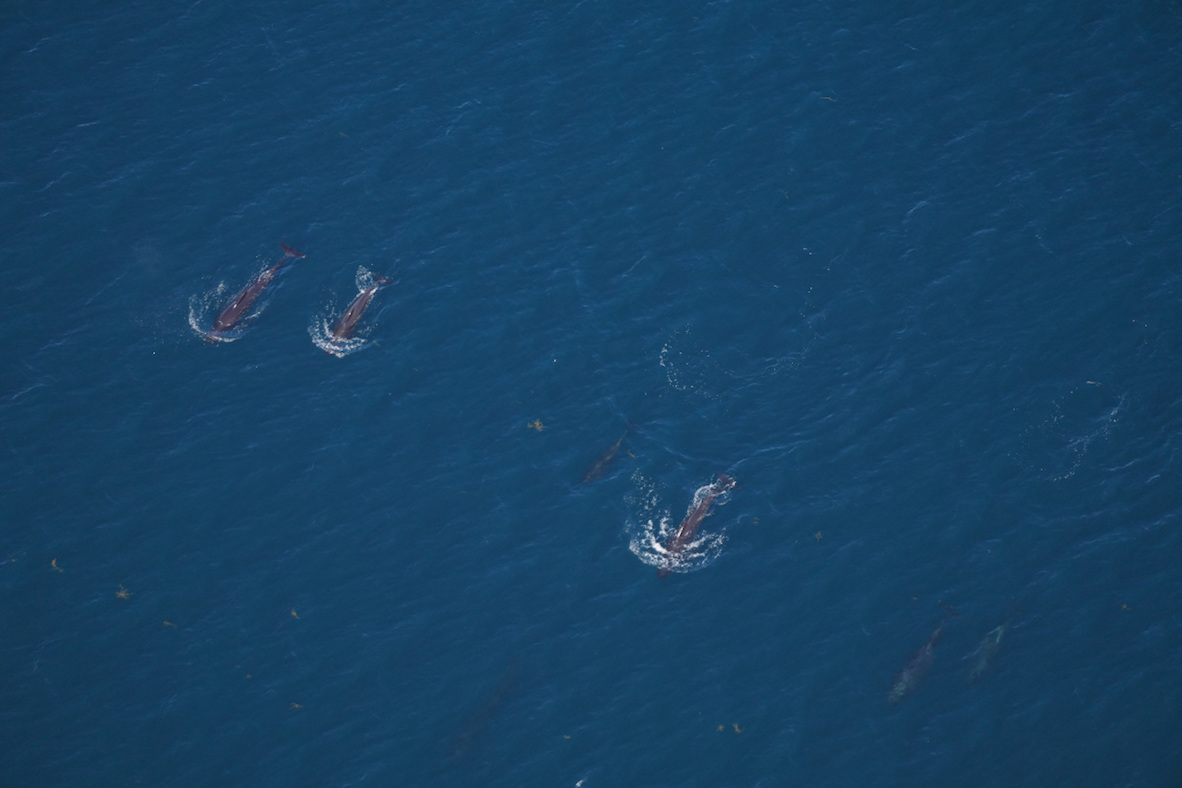
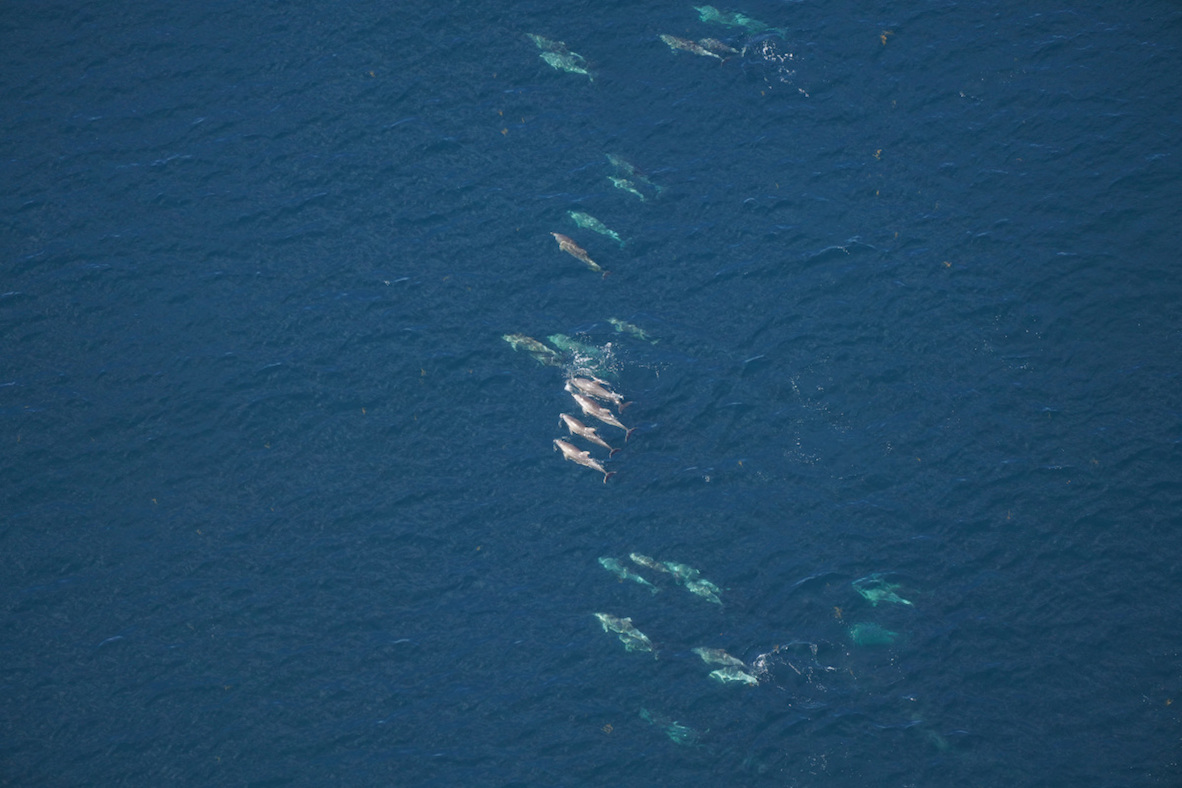
An enigmatic creature emblematic of the broader area
The true highlight of our trip was a brief sighting of two True’s beaked whales at the base of Gilbert Canyon. These enigmatic deep divers spend relatively little time at the surface, and after we circled them only long enough to identify them, they disappeared beneath the surface, where they can hold their breath for up to two hours! These deep divers reflect the awe-inspiring wonder of the broader marine protected area and its deep-sea diversity.
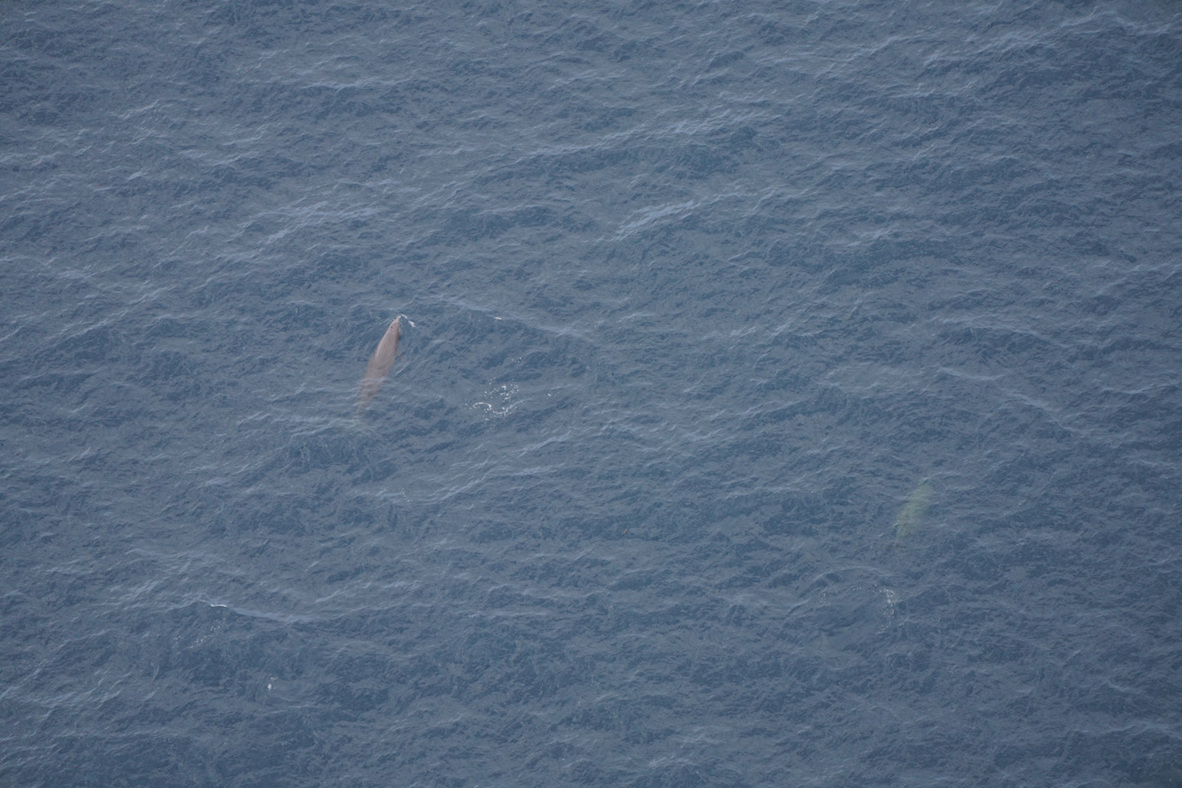
An endangered whale surfaces near one of its own
We also sighted and photographed two sperm whales that surfaced close to one another, resting in between dives. These endangered whales can be 40–60 feet long, making them the largest toothed whale in the ocean. Their unusual appearance—with an extremely large head, and one asymmetrically placed blowhole situated very far forward on its head—makes them a treat to see for everyone.
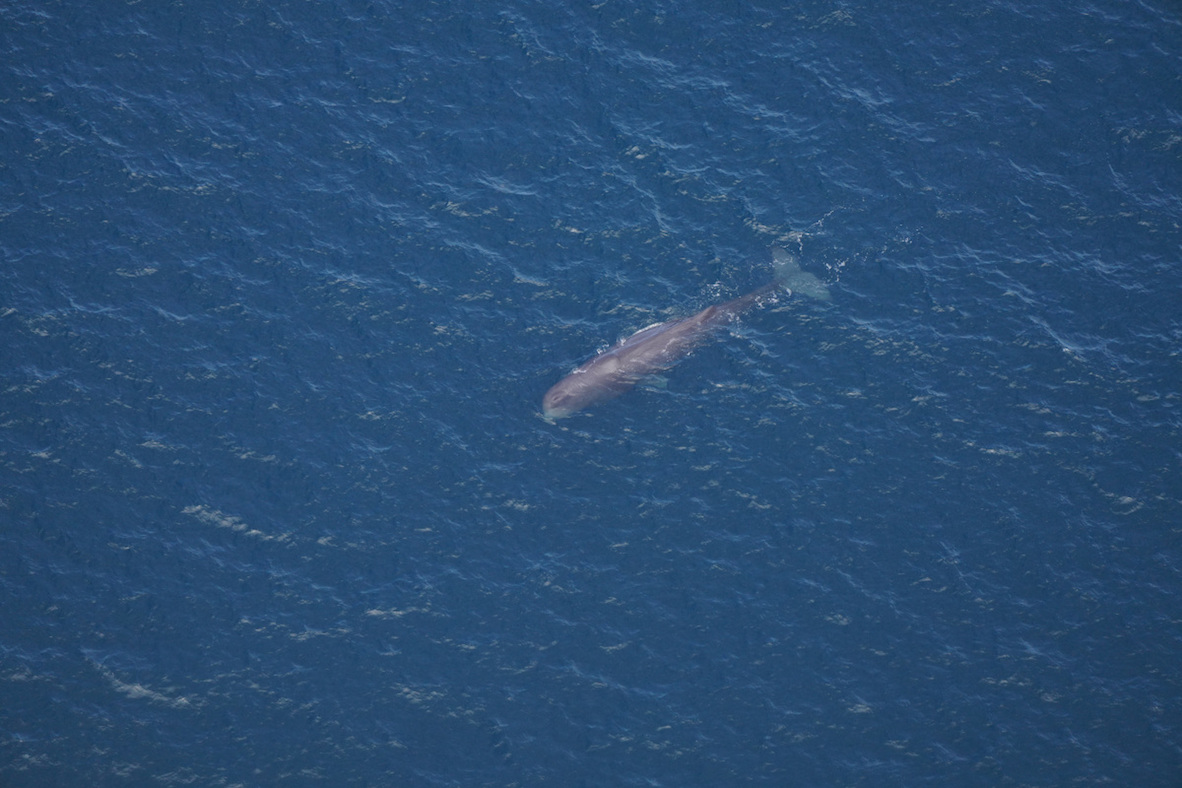
A reminder of human interactions in advance of our Congressional briefing
On the return trip, we had a chance to catch up with our pilots to see what it was like to experience the Monument first-hand. Our pilot Nick described his first glimpse of the remote vastness as “the land on all sides drops below the horizon, and it would appear to anyone as if you were in the middle of the Atlantic. Once we arrive at the Monument, we find ourselves in an oasis. The number and variety of sea life in this area was quite impressive.” Co-pilot Aidan shared his disbelief at how much marine life we saw. “I was shocked to see the sheer amount and variety of ocean life that can be spotted from an airplane flying 100+ miles offshore,” he said. “My subconscious assumption of the ‘big empty blue’ could not have been more wrong.”
The Monument and the ocean life we observe there are far from the “big empty blue,” and we saw reminders of human interactions during our flight. We noticed a series of scars on the fin whale we photographed—evidence of a vessel strike in the animal’s past.
Our diverse sightings were timely, as a delegation from the New England Aquarium prepares to brief Congress on the importance of the Monument in contributing to international and national initiatives to protect thirty percent of land and water by 2030. Strong protections like those in the Monument are crucial in our overall strategies for responsible ocean use and can aid in understanding and mitigating the impacts of human interactions alongside climate change. You can join us in supporting protections for special ocean places by supporting the America the Beautiful Initiative. Learn more about how the Aquarium is working to protect the planet through 30X30 and send a message to your legislators asking for their support of the America the Beautiful Initiative.
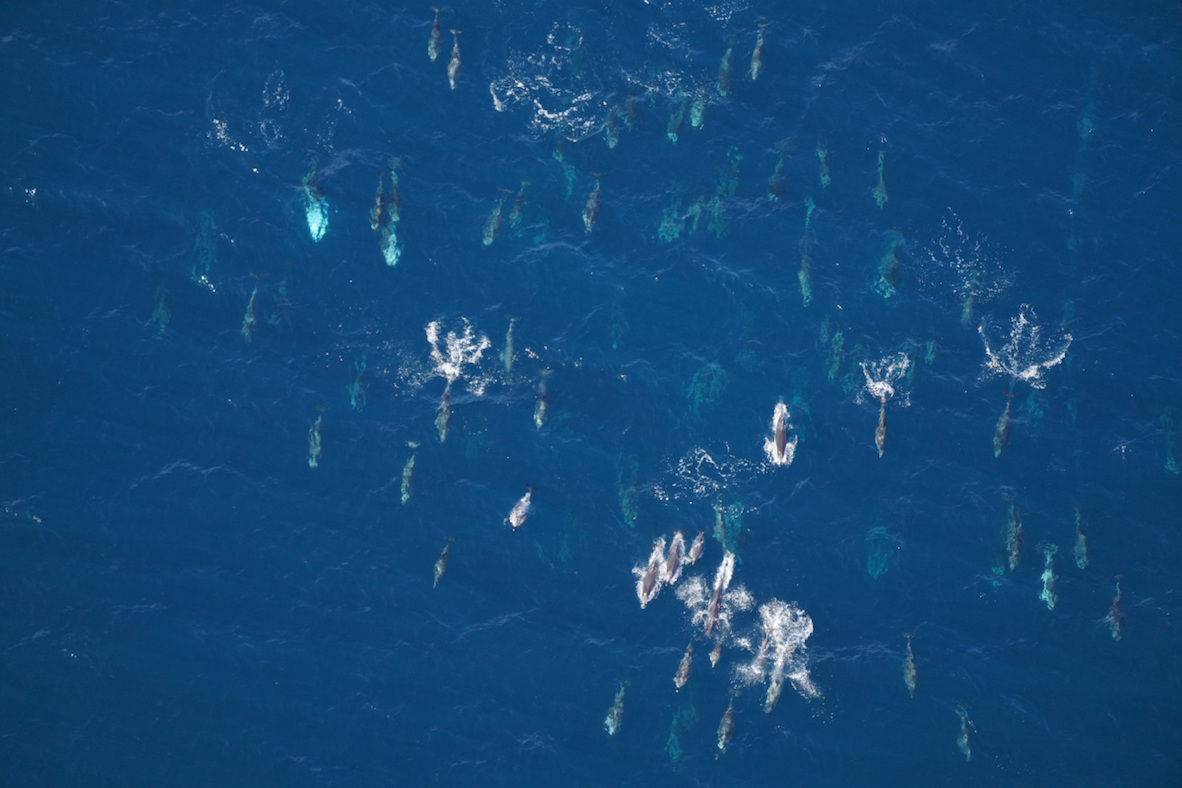
This survey was made possible by the support of Conservation Law Foundation and the Natural Resources Defense Council.

